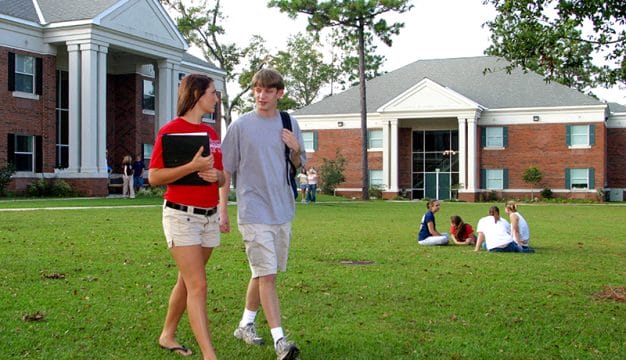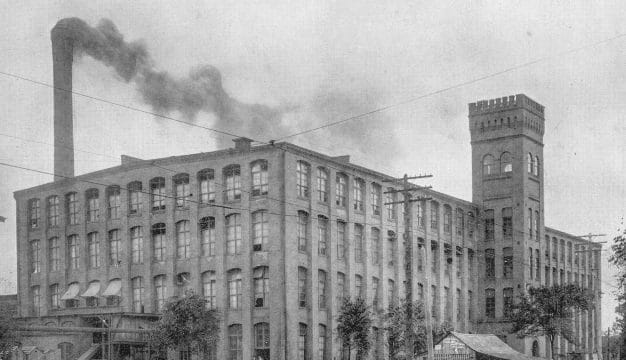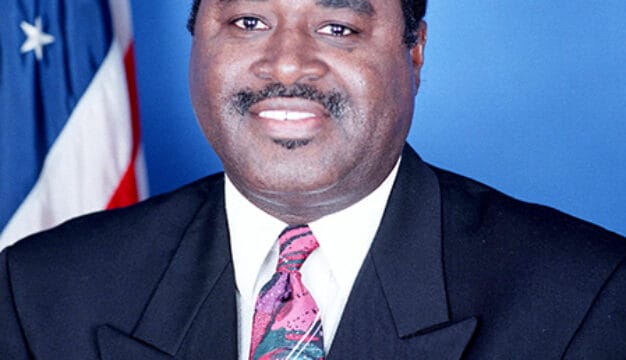Alabama A&M University
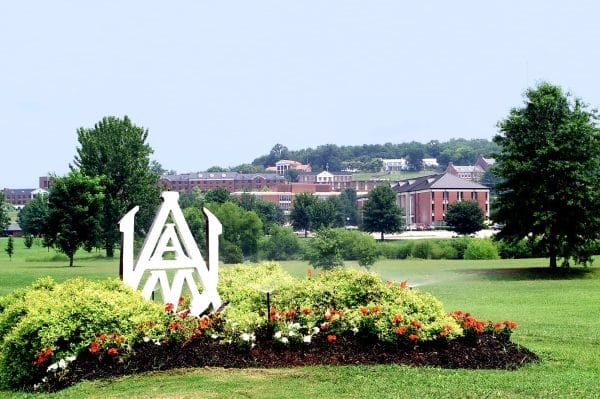 Alabama A&M University
Since its founding in 1875 in Huntsville, Alabama Agricultural and Mechanical University or Alabama A&M University (AAMU) has become known throughout the world for encouraging academic excellence among its diverse student body. The school is a member of the National Association of State Universities and Land-Grant Colleges and is on the register of Historically Black Colleges and Universities (HBCUs). The university is under the control of a board of trustees appointed by the governor, who serves as ex-officio chairman. Also sitting on its board are the president of the student government association and the president of the faculty senate.
Alabama A&M University
Since its founding in 1875 in Huntsville, Alabama Agricultural and Mechanical University or Alabama A&M University (AAMU) has become known throughout the world for encouraging academic excellence among its diverse student body. The school is a member of the National Association of State Universities and Land-Grant Colleges and is on the register of Historically Black Colleges and Universities (HBCUs). The university is under the control of a board of trustees appointed by the governor, who serves as ex-officio chairman. Also sitting on its board are the president of the student government association and the president of the faculty senate.
 First Graduating Class of Huntsville Normal School
AAMU came into being as the result of an 1873 bill passed in the Alabama State Legislature that established a “State Normal School and University for the Education of the Colored Teachers and Students,” provided that the president and trustees of the school placed it at the disposal of the state. The school also arose in large part owing to the continued efforts of its first principal and president, William Hooper Councill, who had founded its predecessor, the Lincoln Normal School, in 1869. The school opened its doors to 61 students on May 1, 1875, as the Huntsville Normal School with a state appropriation of $1,000 per year. Councill introduced industrial education to the curriculum around 1878 to provide students with practical skills that would earn them employment. It attracted wide attention, and as a result the school was assisted financially by the Slater Fund and Peabody Education Fund, as well as by private individual contributors. Efforts to teach industrial education were so successful that the state legislature authorized the school to change its name to the State Normal and Industrial School at Huntsville. The school also received an increased appropriation of $4,000 per year. In 1891, the school received additional funds under the Morrill Act of 1890, which provided monies to schools for instruction in practical and mechanical subjects such as engineering and agriculture.
First Graduating Class of Huntsville Normal School
AAMU came into being as the result of an 1873 bill passed in the Alabama State Legislature that established a “State Normal School and University for the Education of the Colored Teachers and Students,” provided that the president and trustees of the school placed it at the disposal of the state. The school also arose in large part owing to the continued efforts of its first principal and president, William Hooper Councill, who had founded its predecessor, the Lincoln Normal School, in 1869. The school opened its doors to 61 students on May 1, 1875, as the Huntsville Normal School with a state appropriation of $1,000 per year. Councill introduced industrial education to the curriculum around 1878 to provide students with practical skills that would earn them employment. It attracted wide attention, and as a result the school was assisted financially by the Slater Fund and Peabody Education Fund, as well as by private individual contributors. Efforts to teach industrial education were so successful that the state legislature authorized the school to change its name to the State Normal and Industrial School at Huntsville. The school also received an increased appropriation of $4,000 per year. In 1891, the school received additional funds under the Morrill Act of 1890, which provided monies to schools for instruction in practical and mechanical subjects such as engineering and agriculture.
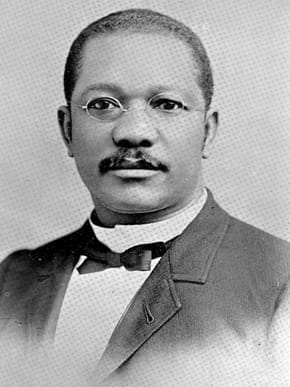 William H. Councill
The name of the school was also changed to the State Agricultural and Mechanical College for Negroes in 1891 and moved to Normal, just outside of Huntsville. There the school had ample room to develop its trades and agricultural programs. In 1919, the institution became a junior college and was renamed the State Agricultural and Mechanical Institute for Negroes.
William H. Councill
The name of the school was also changed to the State Agricultural and Mechanical College for Negroes in 1891 and moved to Normal, just outside of Huntsville. There the school had ample room to develop its trades and agricultural programs. In 1919, the institution became a junior college and was renamed the State Agricultural and Mechanical Institute for Negroes.
In 1939, the State Board of Education permitted the institute to offer coursework at the senior college level. On January 14, 1948, the school was renamed the Alabama Agricultural and Mechanical College. The university received a Class A rating by the Southern Association of Colleges and Secondary Schools in August 1946 and became a fully accredited member of the association in December 1963. On June 26, 1969, the State Board of Education adopted a resolution changing the name of the institution to its current one, Alabama Agricultural and Mechanical (A&M) University.
Having always opened its doors to all, the nearly 6,500-student university continues to offer students who need more initial help with academics the opportunity to excel alongside students who come in as internationally recognized scholars. For four consecutive years, the university placed students on coveted academic teams of USA Today. AAMU has been named one of the top 50 schools nationwide for African Americans by Black Enterprise magazine. It now boasts four Ph.D. programs: food science, physics, plant and soil science, and reading and literacy.
 William Hooper Councill Domestic Science Building
Many companies have turned to the school and benefitted from work by campus scientists and researchers from the Schools of Agricultural and Environmental Sciences, Arts and Sciences, Business, Education, and Engineering and Technology. AAMU faculty members also are involved in various aspects of research for numerous governmental agencies and subcontractors. AAMU scientists have worked on projects as varied as the development of an allergen-free peanut, documenting and studying Caribbean volcanoes, and researching plants that may prove effective for treating diabetes. The volume of research grants and contracts awarded to the university and its research faculty required the administration to develop the Alabama A&M University Research Institute (AAMURI) in 1999 to provide professional staff for pursuing, negotiating, and entering into contracts by university entities.
William Hooper Councill Domestic Science Building
Many companies have turned to the school and benefitted from work by campus scientists and researchers from the Schools of Agricultural and Environmental Sciences, Arts and Sciences, Business, Education, and Engineering and Technology. AAMU faculty members also are involved in various aspects of research for numerous governmental agencies and subcontractors. AAMU scientists have worked on projects as varied as the development of an allergen-free peanut, documenting and studying Caribbean volcanoes, and researching plants that may prove effective for treating diabetes. The volume of research grants and contracts awarded to the university and its research faculty required the administration to develop the Alabama A&M University Research Institute (AAMURI) in 1999 to provide professional staff for pursuing, negotiating, and entering into contracts by university entities.
In 2002, a new School of Engineering and Technology facility was spearheaded and first led by Edward Barnette, the first president of the National Society of Black Engineers (NSBE) during his faculty days at Purdue University. In addition to programs in civil engineering and electrical, industrial, and mechanical engineering technology, the accredited engineering school confers graduate degrees in electrical and mechanical engineering.
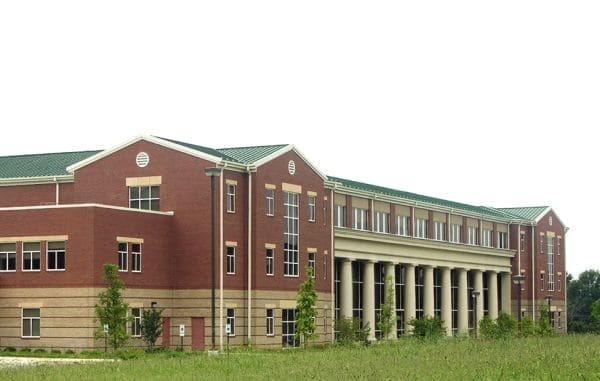 Alabama A&M Engineering Building
The early years of the twenty-first century have been a period of significant renovations and construction on the AAMU campus. Additions to the campus have included the aforementioned 90,000-square-foot engineering school, along with major renovations to the learning resources center and the campus’s historic district. Other resources include a lab facility for programs in food and animal sciences, plant and soil science, and forestry. The recent multi-use Agribition Center in Huntsville serves as a venue for livestock shows and rodeos, as well as more formal activities.
Alabama A&M Engineering Building
The early years of the twenty-first century have been a period of significant renovations and construction on the AAMU campus. Additions to the campus have included the aforementioned 90,000-square-foot engineering school, along with major renovations to the learning resources center and the campus’s historic district. Other resources include a lab facility for programs in food and animal sciences, plant and soil science, and forestry. The recent multi-use Agribition Center in Huntsville serves as a venue for livestock shows and rodeos, as well as more formal activities.
To ensure its future success and to create long-term scholarships, the university coordinates the annual Councill Challenge Campaign to raise funds. The effort developed to help the school overcome historic state funding inequities and has contributed some $45 million to its endowment. The campaign is supported by AAMU faculty, staff, retirees, corporations, foundations, churches, community organizations, the AAMU board of trustees, and alumni.
In 2006, the AAMU Marching Maroon and White Band led the Tournament of Roses Parade in Pasadena, California. The band’s distinguished history, however, extends back to the late 1890s and early 1900s when it was conducted by Alabama native W. C. Handy, later known as the “Father of the Blues.” The University Choir has made numerous regional and national appearances, and AAMU’s athletic programs have gained the national spotlight many times. The school’s student athletes have enjoyed success in volleyball as well as men’s soccer.
 John Stallworth
AAMU boasts generations of outstanding alumni. Among them are William Cox, president of Cox Matthews & Associates, publishers of the nationally distributed Diverse Issues in Higher Education Magazine; Henry Gilford, Chief Executive Officer (CEO) of the Gilford Corporation; Marcus Price, CEO of the Dynamix Corporation; former American Idol winner Ruben Studdard; John Stallworth, corporate CEO, former Pittsburgh Steeler wide receiver, and inductee into the Pro Football Hall of Fame; and D. E. Wilcoxon, publisher of the Renaissance Observer.
John Stallworth
AAMU boasts generations of outstanding alumni. Among them are William Cox, president of Cox Matthews & Associates, publishers of the nationally distributed Diverse Issues in Higher Education Magazine; Henry Gilford, Chief Executive Officer (CEO) of the Gilford Corporation; Marcus Price, CEO of the Dynamix Corporation; former American Idol winner Ruben Studdard; John Stallworth, corporate CEO, former Pittsburgh Steeler wide receiver, and inductee into the Pro Football Hall of Fame; and D. E. Wilcoxon, publisher of the Renaissance Observer.
The school continues to carry on the legacy of its founder. The commitment to the education of all who enter its gates—where they are welcomed by statue of William Councill by noted sculptor Branko Medenica—has made AAMU an institution with one of the most diverse faculties in the state. Such diversity has spurred numerous collaborations and research opportunities.
Further Reading
- Morrison, Richard D. History of Alabama Agricultural and Mechanical University. Huntsville: Liberal Arts Press, 1994.

